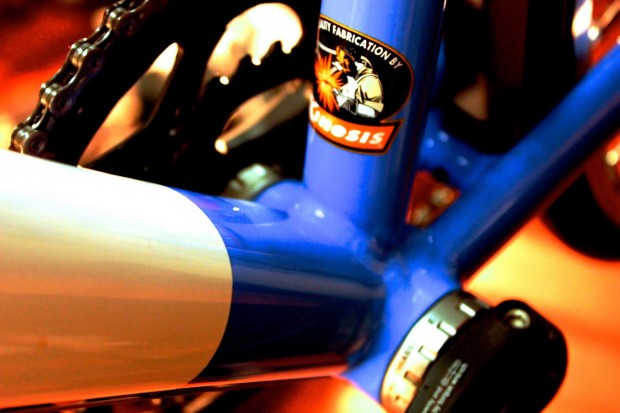Bottom bracket
The bottom bracket shell is one of the most complex and highly-stressed areas of the frame. A junction box for downtube, seat-tube, and chainstays, decisions surrounding its design have been made increasingly complicated by the introduction of a multitude of standards for the mechanical components housed within the shell (BSA, Cannondale’s BB30, SRAM’s Pressfit 30, FSA-Wilier’s 386, Shimano’s BB86, and more).
Genesis opted for a BB86 standard after deciding against Pressfit 30 on the basis of the weight penalty incurred by a shell large enough to accommodate it, Steward explains. BB86 freed up space to provides clearance for chainstays with a greater diameter and which offer greater stiffness as a result.

“If we’d have gone with a PressFit 30, we wouldn’t have had the clearance to go with the 24mm round chainstays, and we’d have had a very heavy bottom bracket shell,” he explains. “There’s no point in having a super stiff crank with a 30mm axle attached to a flexible frame.”
Olsen confesses to skeptism about the claimed benefits of some of the new bottom bracket standards and says he is unaware of any complaints about the stiffness of Shimano’s HollowTechII standard: a unit in which the bearings sit outside of the shell, and which are present on the Hoy bikes.
FSA-Wilier’s 386 standard had been considered, he says, but rejected on the reduced availability of compatible chainsets, and no advantage accrued from the use of the BB30 bottom bracket used on early Hoy sample bikes. “We thought if we make the downtube wide enough and with a large enough diameter, which we can do with a BB30 or a BSA bottom bracket – they’re both 68mm wide – we’ve got no advantage with BB30 from using the wider downtube. We found the frames were still plenty stiff enough.”
Gribaudo, who works principally with carbon, agrees with the Steward and Olsen’s analysis that a Shimano BB86 bottom bracket is easier to accommodate than BB30 or Pressfit 30. But he highlights the challenge of wrapping swatches of pre-preg carbon around the bottom bracket area: challenges reduced, he says, when the area is larger. “Increasing the radius, increasing the global volume, also helps a lot for the manual operation to build the frame and to wrap the carbon on this area.”
He adds that a larger bottom bracket area makes it easier to apply uniform pressure from the air bladders inserted into a carbon frame during the moulding process.




